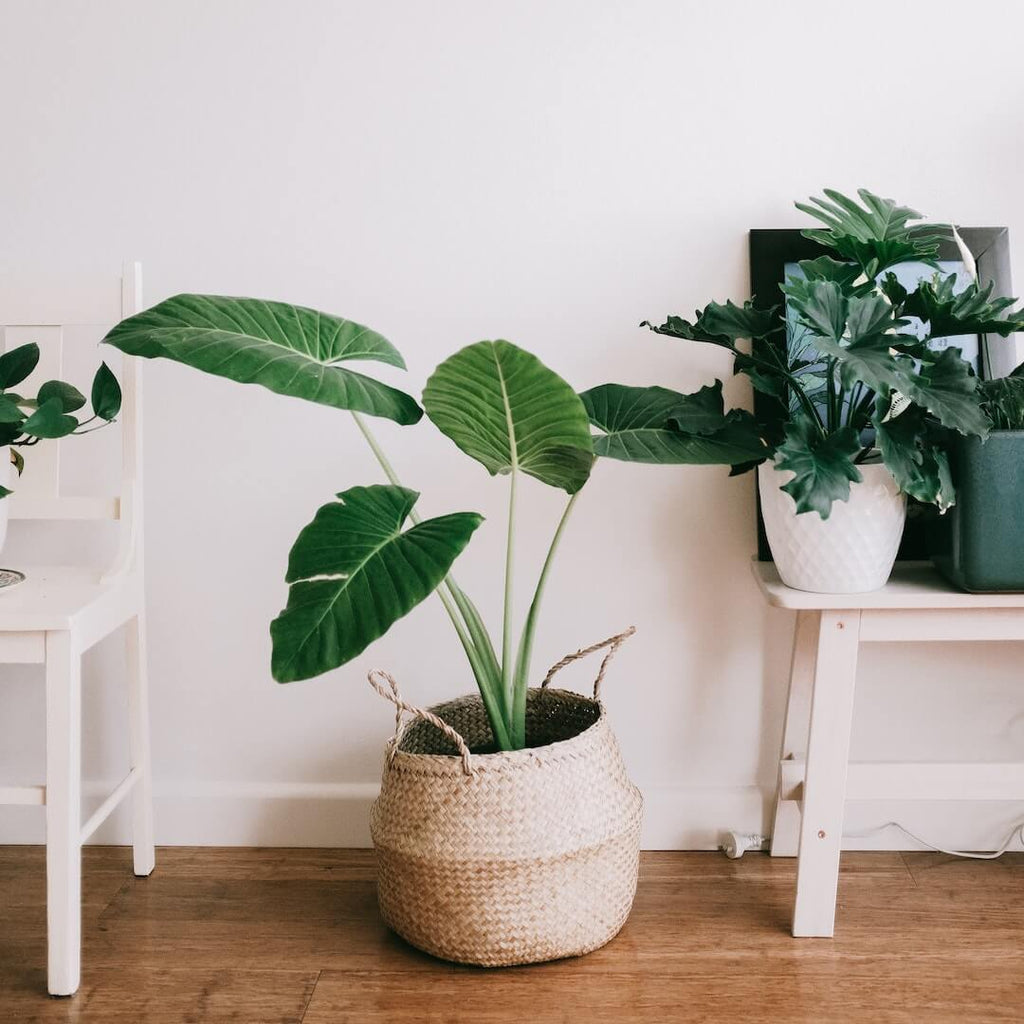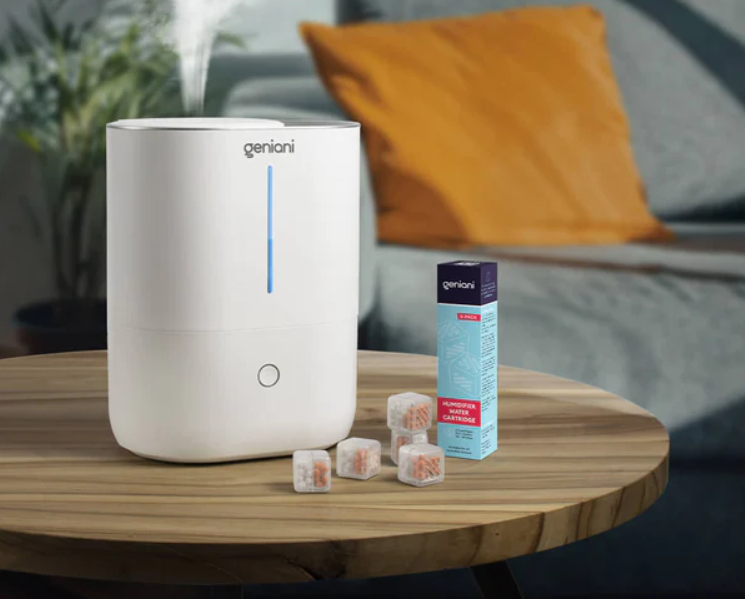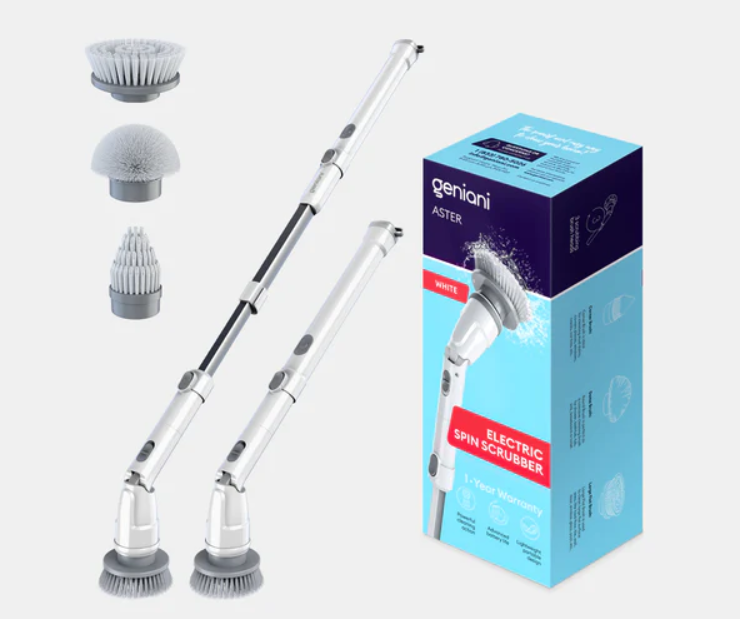The air quality in your home is important for everyone in the family. Low air quality in your home can have a big effect on health and increase the diseases you already have. Low-quality air can be caused by a number of factors. For example the outside pollution, poor building materials, emissions from heating, and appliances. Poor indoor air quality can increase asthma, fatigue, and lung diseases. How can you improve the indoor air quality? There are many ways to identify the quality of your indoor air. Let’s figure everything out and find the best ways to improve air quality in-home.
Sources of indoor air pollution
The Environmental Protection Agency said that the air we breathe inside our homes and offices could be up to five times more polluted than the air outside. It is awful, isn’t it? The reason for it is simple. The contained areas enable pollutants to build up more than open spaces do. But unlike secondhand smoke, radon gas, and molds, most indoor air pollution comes from products we willingly bring into our home.
Air fresheners
Almost every air fresheners emit toxic pollutants. These particles at a certain level can lead to health risks. Many clean-air advocates compare their toxicity to that of secondhand smoke. Many air fresheners also contain phthalates. It is an endocrine disruptor. These can be specifically harmful to infants and children whose endocrine systems have not yet fully developed.
The candles

Paraffin candles are dangerous and the worst to ever consider. Paraffin is a byproduct of petroleum, coal, or shale. They have been whitened using bleach that infuses it with dioxins. It is one of the most toxic substances. Another chemical, acrolein, is linked to the risk of lung cancer from cigarette smoke. It is added to the wax as a solidifying agent.
Dryer sheets
Do you remember how waxy dryer sheets can be? That waxy surfactant is made of a mixture of quaternary ammonium salt, silicon oil, or stearic acid, which melts in the heat of the dryer to coat your clothes. It may lead to a serious problem with health, increase asthma and heart diseases. Basically, your fabrics aren’t softer. Your shits are just coated in a fatty film to make you think they are. Dryer sheets also contain fragrances that contain toxins. They get into the air and can cause some problems with your respiratory system.
Cleaning products

Some cleaning products release dangerous, Volatile Organic Compounds (VOCs). They can lead to chronic respiratory problems and allergies, asthma, or other respiratory illnesses. Products containing VOCs include most aerosol sprays, chlorine bleach, rug, and upholstery cleaners, furniture and floor polish, and oven cleaners. Even “green” or “organic” cleaning products may contain ingredients that can cause health problems.
Carpet
A ‘new carpet smell’ is actually the off-gassing of hazardous volatile organic compounds (VOCs). It includes toluene, benzene, ethylbenzene, formaldehyde, bromine, styrene, and acetone. These can cause headaches, throat and eye irritation, allergies, confusion, and drowsiness. Synthetic carpets made from nylon and olefin fibers typically off-gas the most. It is even more dangerous.
Paint
It is no matter painted your house a long time ago or 2 months earlier. If you live in an older home, you may have walls coated in lead paint, which was banned in the late 1970s. Lead can be a powerful neurotoxin even decades after a room is painted, as the paint chips, peel, and flakes off surfaces.
Kitchen stove
A poorly ventilated kitchen can cause a huge amount of air pollution in your home. Gas stoves emit nitrogen dioxide, which is created when fuel is burned at high temperatures. Nitrogen dioxide mixes with the air to create nitric acid and toxic organic nitrates. These can irritate the lungs and lower resistance to respiratory infections such as influenza. According to the EPA, frequent exposure to high concentrations of nitrates may cause acute respiratory illnesses in children.
Furniture
Chemical fire retardants are common in a wide variety of household items such as furniture, electronics, appliances, and even baby products. These chemicals have since been proven ineffective in preventing fires and are linked to numerous health and environmental problems. They can make fires more toxic by forming deadly gases and soot. And they are the real killers in most fires.
Health effects of air pollution
Even healthy people can experience health impacts from polluted air. It can include respiratory irritation or breathing difficulties during exercise or outdoor activities. The risk of indoor air effects depends on your current health status, type of pollution, and it’s concentration. The duration of your exposure to the polluted air is also important.
The most popular short-term effects of indoor air pollution are dryness and irritation of the eyes, nose, throat, and skin, headaches, fatigue, shortness of breath, hypersensitivity, and allergies, sinus congestion, coughing, and sneezing. The immediate reaction to indoor air pollutants depends on several factors. For instance, people with asthma and allergies are more sensitive. Therefore they can notice more symptoms as compared to those who don’t have asthma or allergies. A lot of potential health problems may develop after long or repeated periods of exposure. These long-term exposure effects include worsening respiratory disease (asthma, hypersensitivity pneumonitis, bronchitis), heart disease, lung cancer, and premature death.
The best ways for improving home air quality
Air quality improvement is a tough task. If you’re elderly or you have a pre-existing health condition, such as asthma or heart disease, you’re particularly vulnerable to the effects of pollution. We spend about 90% of our time indoors, and this isn’t something we should ignore. So, there are tips on how to improve air quality in the home.
1. Open windows

It seems really easy, isn’t it? it would be best if open your windows regularly to remove polluting particles from the air in your living space. The winter month is an especially important cause of a high humidity level. However, it is not good for those who live near a busy road. Be strategic about when you do this. If you live near a busy road, keep the windows closed at peak traffic time. If you suffer from hay fever, don’t open your windows in the morning, when the pollen count is highest.
2. Purchase an air purifier
Air purifiers can be beneficial for those who have asthma, allergies, and chemical sensitivities. Pet owners will be extremely happy with this device. An air purifier can get rid of dander in a few days. It will help you to get rid of even small particles of pollutions and improve indoor air quality successfully.
3. Cooker hoods
Even if you think this device is too loud, you should definitely switch on your kitchen hood and fans during and after cooking. It will help you to clear the air of oil and other ingredients that have evaporated into it. The cooker hoods may also limit damage to your walls and kitchen cabinets. To get a maximum effect from this device, buy an extracting (vented hood or ducted) cooker hood, rather than a recirculating one. Extracting hoods send the air out of your home through the roof. Meanwhile, recirculating models filter the air through a carbon filter and recirculate it inside your kitchen. If you have a recirculating hood, make sure you clean and change the filter regularly.
4. Carpet cleaning

Yes, yes and yes. It is a must. Many allergens and pollutants found in the carpeting of an area. Regular vacuuming is important for clean air. Thorough professional cleaning can provide an extra form of cleaning. Many companies offer special services when it comes to pet treatment and allergens.
5. Furniture cleaning
Your furniture doesn’t simply hold onto odors. The furniture absorbs germs, pollutants, and pet dander. Cleaning upholstered furniture on a regular basis is very important. This is an effective way to improve indoor air quality in the home or the office.
6. Mop floors
Hardwood floors, tile, and other surfaces usually collect dirt and dust. These can be problem areas for keeping good air quality. Mopping these areas with non-abrasive products is a great approach. You will not only improve the air but apply care techniques to your floors.
7. Clean walls
You may don’t know it, but your walls also hold onto germs and pollutants. Cleaning techniques can prevent this and improve your indoor air. There are appropriate cleaning products that do not cause harm to surfaces. They allow you to maintain healthy indoor air.
8. Air filters
It is important to change air filters regularly to keep the air clean. They are useful when talking about cleaning the air. These filters can be purchased and changed on a monthly basis. This is especially essential for individuals with allergy issues, pet owners, and families with young children.
9. Floor mats
These mats are used to clean shoe bottoms, and they are really useful for everyone. The perfect place for floor mats is the entrance of a doorway. Materials tracked on the feet can easily get into the air. These mats are used to clean shoe bottoms. They are useful products for homes and for businesses to purchase.
10. No smoking
The rule is simple: don’t allow guests or anyone else smoke in your home. Second-hand smoke does not only cause odors but it also increases the chance of developing asthma and cancer, among other health risks. If your guests do smoke, have them take a break outside.
11. Check your furniture
Some of your furniture may be made with toxic glues. It contains harmful chemicals that have a bad impact on health. Finishing products as lacquers and varnishes may cause problems with some people with allergies and asthma. Avoid furniture made with woods that have been treated with formaldehyde and put together with toxic glues.
12. Be fragrance-free
Some particles that have been found in many cleaning products can impact people with asthma and allergies. Look for fragrance-free products, including laundry soap, kitchen, and bathroom cleaners. Try using natural cleaners such as lemon and baking soda to make your home sparkle.
13. Add plants

Plants not only add some color to the room, but they also are known as natural air purifiers. Depending on your space, there are plants that thrive in sunlight and those that need little light and hardly any maintenance. You can choose a spider plant or a terrarium to not only brighten up your space but help clear the air.
14. No aerosol sprays
Aerosol sprays can release harmful chemicals into the air. Instead, opt for non-aerosol versions of hair sprays, deodorants, furniture polishes, and air fresheners. Take projects that involve spray painting outside.
15. Test for radon
Radon is a gas that raises the risk of lung cancer. The colorless gas can be found in nearly all soil types and moves up through the ground and into your home through the foundation. You should test the home for the radon level to keep an eye on it and be safe.
16. Eliminate mold
The mold can lead to serious health problems such as wheezing, sore throat, skin rashes, watery eyes, and headaches. The best way to get rid of mold is to manage the humidity levels in your home. The kitchen and bathroom are in a top of risk. The fan in the bathroom can help if to turn it on immediately after bathing. It will help to help remove the humidity from the room.
17. A humidity level
The right humidity for any household is 40-50%. You need to balance a humidity level in your home. If your household includes too much humidity, the mold and dust mites grow extremely quickly. Lack of humidity is harmfull too and can be a big cause of health issues. It is important to monitor this in both homes and businesses to improve indoor air quality.
18. Reduce exposure to carbon monoxide
Carbon monoxide is a colorless, odorless, tasteless, and a toxic air pollutant. Carbon monoxide is produced as a result of incomplete combustion of carbon-containing fuels, sources of carbon monoxide in the home include wood stoves, leaking chimney and furnace, kerosene heaters, and gas water heaters. It is very important to make sure carbon monoxide getting inside our homes is being managed to avoid air poisoning, which can eventually lead to death.
19. Groom your pets regularly
Pet dander and hair are other common allergens in indoor air. If you’re a pet parent, make sure you properly brush your pet’s coat regularly and vacuum all the carpeting, floors and furnishings using a vacuum cleaner with HEPA filter. The air purifier with true HEPA filters may help you even more successfully with pet dander and hair.
20. Clean sheets and clothes
One of the leading causes of poor air quality in your home is “dust mites.” Dust mites build up as a result of having dirty cushions and curtains. Dust mites are something that you should be careful about as it irritates the nose and the throat; therefore, leaving a tired and sluggish feeling. One of the crucial ways to conquer dust mite is keeping your pets off your bed, cushions, and always keep them clean.
21. Choose beeswax candles
Beeswax candles have air-purifying qualities. When beeswax candles burn, they release negative ions. Pollen, dust, dirt, pollutants, and other junk particles in the air carry a positive charge. As a result, the negative ions from beeswax candles released into the air and sucked into these positive charges. Beeswax candles are 100% natural and not only reduce contaminants in your home, but they also smell good and create a wonderful ambiance too.
22. Essential oils
The great choice to refresh your home without aerosols. Using essential oils is one way to reduce bad odors in your home that are associated with poor air quality. Choosing your essential oils carefully and using them in the right quantities is important for safe usage.
23. Use salt lamps
If you do not like candles in your home, you can achieve a great effect by having a salt lamp too. These lamps emit negative ions when lit. These negative ions will help fight against the positively charged particles and contaminants that cause allergies. People with asthma have reported that salt lamps have helped to reduce their symptoms.
24. Pet cleaning

Pet dander is one of the issues related to having indoor pets. Many of these issues can cause poor air quality. Regular cleaning of pets, get rid of excess fur and dander. This is a good process for protecting the air. It is also helpful for those who have allergies in this area.
25. Eco-friendly cleaning products
A clean home is less likely to contain dust and other particles that can lower air quality and irritate allergies. But cleaning with the right products is key. Where possible, use completely natural cleaning products such as lemon and vinegar that leave no toxic footprint behind.
26. Air conditioner drip pans
Air conditioning units often have drip pans. The water is stored there and cause health problems over time. Mold is one example in this category. Emptying these pans regularly can prevent the growth of mold. It is also an important task to ensure air quality.
27. Non-scented paint
There are many paint products on the market today, and many of them can increase the rate of asthma and other allergies. You can find those that have no scent at all and are designed to promote good air quality. This is important for doing any type of home renovation or improvement job. Finding environmentally friendly products is essential for your indoor air quality. Especially if you have kids.
28. Outdoor hobbies
There are a variety of hobbies that produce some emissions. They can serve to pollute the air even if minimally. Woodworking, carving, painting, and other activities may be best done outdoors. This is a good way to improve the overall air quality in your home and living spaces.
29. Smoke detectors
Smoke detectors are extremely important to any physical structure. They are not only useful in alarming when there is a fire. These detectors inform you when there is any smoke in the air. This is a good tool to have to ensure the air quality in living spaces.
30. Car exhaust control
Numerous homeowners warm-up their vehicles in closed garages most especially in the winter months. When car warming is done in a garage (attached to the house) whose door is closed with no escape vent for smoke coming out of the car exhaust., this process alone will pollute the air quality and could lead to suffocation due to the carbon monoxide, steam and other toxic fumes coming out of the car.
31. Remove shoes
If you remove your shoes at the door, it may help you to protect the air. Although floor mats are effective in many instances, unfortunately, they can’t prevent all debris and materials from being tracked into the home. You can improve the air quality by encouraging everyone to do this one thing on a regular basis.
32. Smoke fans
These days everyone uses a fan to address smoke. This can be used when cooking certain types of dishes. The fan works to clear and purify the air. There are some microwaves with similar fan designs, as well. They provide you with a way to protect the air in your home.
33. Reduce fragrances usage
Different types of fragrances products are utilized in homes and business buildings. Typically these are centered around forestalling foul smells noticeable all around homes or business buildings. Simultaneously, these items can pollute the air when they are not either overused or having different mixtures of the fragrances used at the same time. Reducing the use of these fragrances is another way of improving indoor air quality.
How can you improve indoor air quality fast
The truth is, air pollution in your home can be just as worse than it is outdoors. An average American spends 87% of their life indoors. Therefore, we need to think about indoor air quality and keep an eye on it. With a little preventative maintenance and some basic knowledge, you can take immediate steps to improve your indoor air quality today.







